Blog
Keeping your teeth clean is essential to dental health and the simplest way to keep that smile sparkling. But age, certain foods, and your lifestyle eventually cause teeth to start to yellow or stain no matter how strict your hygiene habits are.
Yellowed or stained teeth can drastically affect a person’s confidence, and more people are seeking ways to reverse the discoloring. When asked what they’d most improve about their smile, most people say they’d like whiter teeth, according to the American Association of Orthodontists.
For some, stains or yellowing can be so detrimental they stop smiling out of embarrassment. There are several methods offered by Dr. Tomazin that all restore brightness and help repair other signs of damage to keep that smile shining bright.
What Causes Teeth to Yellow?
Enamel works as our teeth’s front-line defense against damage, absorbing most of what the teeth come into contact with.
Teeth begin to yellow due to:
- Food and Drink: Foods or beverages with dark pigments can stain teeth.
- Smoking: Tobacco contains several chemicals, and the smoke itself causes teeth to yellow.
- Age: Brushing and everyday wear and tear causes enamel to thin and look dull.
- Medications: Certain medications can darken teeth.
- Injury: Some injuries can be bad enough to chip or otherwise damage tooth enamel.
Teeth Whitening: How Does It Work?
Teeth whitening is one of the least invasive ways to brighten a smile and can remove years of stains or yellowing. Dr. Tomazin offers patients three different options:
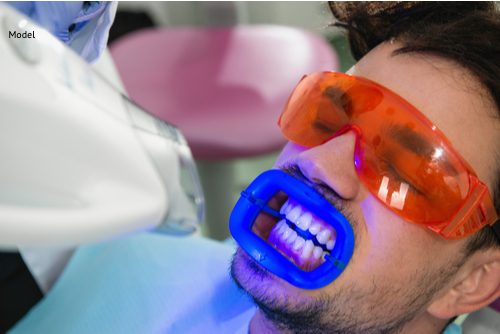
Bleaching
This process uses hydrogen peroxide and carbamide peroxide to break down stains. Dr. Tomazin will use a protective gel or rubber shield to protect the gums and mouth before applying bleach to the teeth.
At-Home Whitening
This process also uses bleach, via whitening strips or special trays, to remove stains and yellowing. Patients are given the option of a 22 percent bleach or a 35 percent bleach solution.
The 22 percent bleach is used for an hour twice a day and overnight. The 35 percent bleach may only be used for 15 minutes twice a day or 30 minutes once a day. The entire treatment usually takes about two weeks.
In-Office Whitening
This process uses the Venus White® Max Whitening System, made with hydrogen peroxide and potassium nitrate to help ease the tooth sensitivity that often happens after whitening treatments. The in-office process takes about two hours and about two weeks of at-home treatments with special bleach syringes and trays.
Bonding, Crowns, and Veneers: How Do They Brighten Smiles?
Clearing up years of stains can sometimes be harder than it seems. Enamel doesn’t grow back, so any damage done is permanent and must be repaired through other means.
Dr. Tomazin offers bonding, porcelain crowns and veneers, and same-day crowns for patients who need to repair damage like cracks or chips on their teeth or repair a tooth that has grown discolored due to decay.
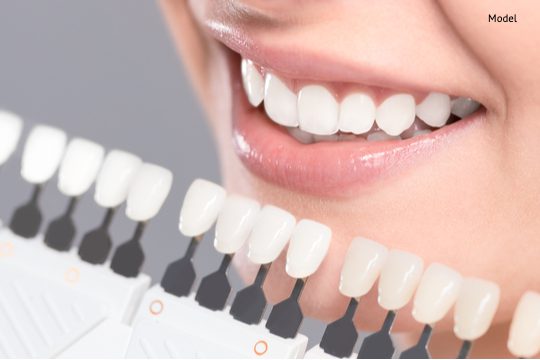
Bonding
With bonding, Dr. Tomazin uses a resin (durable plastic) material applied to the tooth. The material is color-matched to the tooth and hardened under a special light to “bond” the material to the tooth, restoring its appearance.
Dr. Tomazin can perform direct composite bonding, where the tooth’s surface is first roughened with an acid solution before the resin is applied, molded, and hardened. Adhesive bonding is used together with other procedures, like veneers.
Bonding is quick and painless—most procedures are able to be completed within one office visit—and leaves patients with very natural-looking results that can last up to five years.
Same-Day Crowns
Dr. Tomazin uses CEREC® restorations to offer patients beautiful, natural-looking crowns that are crafted and placed all in the same office visit, avoiding a more cumbersome procedure.
CEREC® uses 3D technology and specialized cameras to take precise, digital impressions of each tooth. These images allow Dr. Tomazin to design the crown and get it milled in-office, typically within 15 to 20 minutes.
Same-day crowns are made with a unique type of porcelain that’s superior to the traditional material. This porcelain is less abrasive and wears down at the same rate as the rest of your enamel, ensuring results are as natural as possible.
Patients can walk in for a visit with Dr. Tomazin and walk out with brand-new crowns that last between 10 to 15 years. No temporary crowns are needed with same-day crowns.
Porcelain Crowns and Veneers
The gold standard for repairing damaged teeth, porcelain crowns and veneers are long-lasting and designed to blend in seamlessly for a beautifully enhanced yet natural-looking smile.
Crowns and veneers are non-porous and resistant to stains, which means teeth stay brighter for longer. Veneers completely cover the front surface of the tooth, a permanent way to repair heavily damaged or stained teeth.
Impressions of the teeth are made before the crowns and veneers are specially fabricated. Patients may need to use temporary crowns in the meantime. Dr. Tomazin ensures crowns and veneers are color-matched to blend in with the rest of your smile.
Application is generally painless. A thin layer of enamel is removed before the crown or veneer is placed over the needed tooth or teeth. They typically take about two office visits to complete.
Crowns and veneers can last up to 15 years without replacement.
Are you looking for ways to get a brighter smile? Schedule a consultation with Dr. Tomazin by calling 951-686-3666.
The temporomandibular joint plays an integral role in the motion of the jaw and mouth. Located on each side of the mouth, each joint acts as a sort of “hinge” that allows you to open and close your mouth, making it possible to speak, chew, and swallow. Together with facial muscles and ligaments, the temporomandibular joints control the mandible, or lower jaw, allowing it to move forward, backward, and side to side.
TMJ is used as an abbreviation for disorders of the temporomandibular joint. TMJ affects the muscles and ligaments that make up the temporomandibular joint and cause pain, tenderness, and stiffness in the area. They are caused by a variety of factors, including genetics, injury, and stress levels. In more extreme cases, TMJ disorder can cause so much pain and stiffness that it can be difficult to open or shut the jaw.

TMJ Signs and Symptoms
TMJ disorders can cause symptoms such as:
- Pain, tenderness, and stiffness of the jaw
- Pain in one or both temporomandibular joints
- A “clicking” or “grating” sound when you chew or open your mouth
- Pain or aches in or around the ear
- Difficulty or pain while chewing
- Facial pain or tenderness
- Recurring headaches
- Joint “locks” up, making it hard to open or close your mouth
Common Causes of TMJ
The area that controls the movement of the jaw muscles contains a disk of cartilage between the ball and socket of the temporomandibular joint. If that disk gets damaged for any reason, such as arthritis or an injury to the jaw, TMJ disorder may develop. An uneven bite or misaligned jaw can also cause the disk to get damaged or misaligned, leading to TMJ pain. Long-term teeth grinding, also known as bruxism, is another common cause of TMJ. A diet with many hard or hard-to-chew foods, such as crunchy potato chips or chewy candy bars, may also play a role in causing TMJ pain. Stress has also been linked to both bruxism and TMJ. The causes behind TMJ disorders are not always apparent, but the pain will continue to worsen if left untreated.
Diagnosing TMJ
If you’re experiencing symptoms that indicate you may have TMJ, you should see your doctor or dentist, such as Dr. Tomazin, as soon as you can. Your dentist will check your jaw and teeth by observing the motion of your mouth as you open and shut your jaw and also pressing on specific areas to check for tenderness or pain. Your dentist will also listen for any audible “clicking” or grinding. You may need to get X-rays or other scans if further examination is needed. Once diagnosed, you can begin to discuss what treatment options are available.
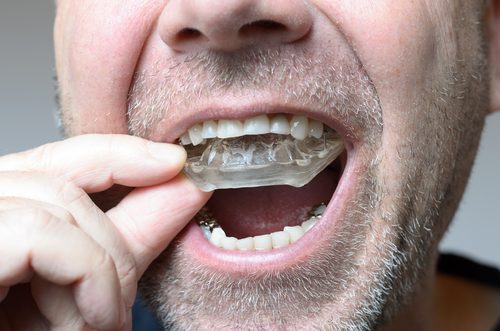
Treating TMJ
Your dentist will help you develop a plan to treat your TMJ upon diagnosis. Some treatments for TMJ include:
- Medications
- Therapies
- Change in diet
- Physical exercises
- Pain relief remedies
- A night guard to decrease bruxism
Know Your Treatment Options
The causes of TMJ disorder can vary from patient to patient. Factors such as diet, jaw placement, previous trauma or injury to the area can all play a role, along with other conditions such as rheumatoid arthritis. Bruxism, or teeth grinding, also causes TMJ pain.
Dentists, such as Dr. Tomazin, work closely with their patients to accurately diagnose TMJ and come up with a treatment plan that works to relieve the effects of this often painful disorder. A good treatment plan will help to decrease the pain, tenderness, and stiffness associated with TMJ and can even help prevent what causes the disorder in the first place. A combination of treatments may be the best way to help alleviate your symptoms.
Treating TMJ with Medicine
Your dentist may need to prescribe certain medications to help deal with the pain and other symptoms related to TMJ. Pain relievers and anti-inflammatory medications, such as ibuprofen, may be used for a limited time to help decrease pain. Some dentists may prescribe certain types of antidepressants or anti-anxiety medications, as in low doses they can be used to decrease bruxism. If needed, a dentist may also prescribe muscle relaxants, which help ease tension and pain from muscle spasms related to TMJ.
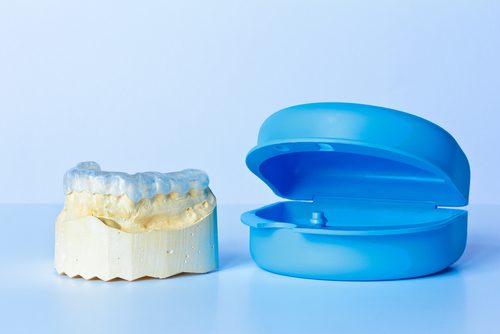
Therapeutic Treatments
There are a few different therapies that can be used to address TMJ and relieve symptoms. Physical therapy, such as exercises to help strengthen and stretch your jaw and mouth muscles, can be used to provide relief. Some dentists also use ultrasound treatments to help relax muscles and a heat or ice pack for pain. If there is bruxism, the use of a mouth guard or splint will also help decrease nighttime grinding and relieve pain and discomfort. Mouth guards can be bought at a local drug store, but a mouth guard or splint customized to fit your bite is the best option. Dr. Tomazin uses a special mold to craft a mouth guard or splint tailored to your needs.
Home Remedies
Some dentists recommend some simple lifestyle changes that can also help ease the symptoms of TMJ. Some home remedies include:
- Eating soft foods
- Cutting food into smaller pieces
- Avoiding sticky, chewy, or crunchy food
- Avoid chewing gum and biting nails
- Using heat or ice packs
- Relaxation or meditation techniques to loosen tense jaw muscles
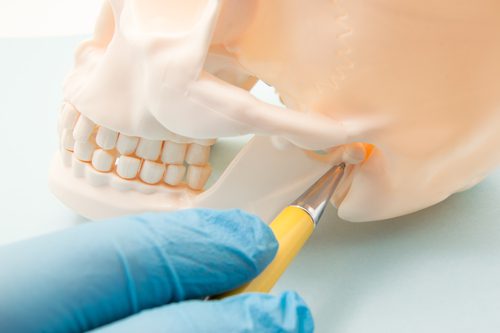
Surgery or Other Procedures
In more severe cases, or if other treatments haven’t helped, surgery or other less invasive procedures may be recommended.
Arthrocentesis:
This is a minimally invasive procedure where a dentist injects fluid to irrigate the temporomandibular joint and remove debris, helping decrease inflammation.
Injections:
Some TMJ patients benefit from cortisone injections into the joint to relieve symptoms. In other cases, botulinum toxin type A (commonly known as BOTOX®) injections into the jaw can help relax the muscles associated with TMJ pain.
Acupuncture:
The use of tiny needles inserted into certain points of the face and body may help alleviate some of the pain and muscle stiffness from TMJ.
Dental work:
In some cases, TMJ can be alleviated by adjusting or reshaping some of the teeth. This can help fix an uneven bite that often leads to some of the worst symptoms. Orthodontic treatments, such as tooth aligners or a retainer, may also be recommended.
Modified condylotomy:
This type of surgery is best used if TMJ has caused “locking” or difficulty in moving the jaw, as it is done on the mandible to correct movement issues.
Open-joint surgery:
This type of surgery will help replace or repair the temporomandibular joint and is typically only used if there is a structural issue with the joint itself. This should only be considered if other TMJ treatment options have been tried and haven’t worked.
Dr. Tomazin will help you develop a treatment plan that best addresses your TMJ symptoms to find you long-lasting relief. Call our offices at 951-686-3666 to schedule a consultation soon.
Having healthy teeth and a bright smile is a significant priority for many people. To keep your teeth at an optimal, healthy pH level, it is essential to know what foods can lead to tooth decay and how to reduce acidity in your mouth to fight off plaque and bacteria that cause cavities. Many contributing factors to tooth decay include diet and lifestyle, which can be easily changed to promote healthier teeth and maintain a brilliant smile. Adopting new eating habits can have a considerable effect on your oral pH levels.

Highly Acidic Food and Drinks
An essential step toward tooth decay prevention is being aware of what foods are potentially sabotaging your attempts to achieve healthy teeth. Consuming foods high in acidity causes weakened tooth enamel, leading to tooth decay and other adverse side effects. Some examples of food and beverages that are highly acidic include:
- Coffee or tea, especially if they are sweetened
- Soda and lemonade
- Sticky snacks, such as raisins or chewy candies
- Sugars
- Tomato products
- Any foods that stick to your teeth after eating them, such as potato chips
How to Reduce Acidity
Brushing your teeth twice a day and flossing are excellent habits to achieve an ideal oral pH level, but they not usually enough to tackle all the acidity that is causing bacteria and plaque. Prevention procedures conducted in Dr. Tomazin’s office can help eliminate a significant amount of acid to help combat bacteria and other concerns that lead to tooth decay. Some behaviors should be avoided while others are healthy options that will assist in lowering acid levels in your mouth for an overall balanced pH.
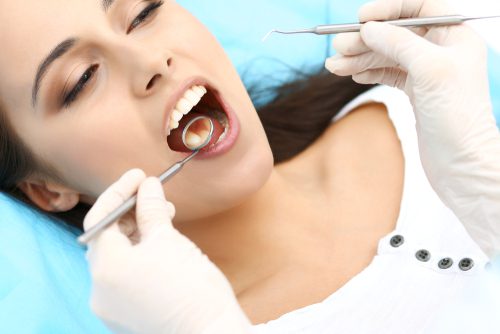
Behaviors That Can Hinder PH Levels
- Between-meal snacking can expose teeth to acids that lead to damage, so limiting this habit can help reduce exposure to harmful acid levels.
- Cake, candy, cookies, crackers, french fries, mints, muffins, pretzels, raisins, and other dried fruits contain a lot of sugar, which increases acid levels. Eating a diet high in sugar will expose teeth to significant levels of acid.
Foods That Are Beneficial for PH Levels
- Cheese, chicken, nuts, and dairy products can protect tooth enamel due to their acid-counteracting qualities. Calcium and phosphorus found in these items also help protect teeth.
- Choose beans, fish, nuts, and seeds as your primary sources of protein, as they are less acidic than other protein sources.
- Consume a variety of vegetables (especially dark, leafy greens and orange vegetables) for a balanced pH level.
- Drink any coffee or sweet drinks quickly through a straw with your meal, if you are not able to remove them from your diet.
- Eat plenty of fruits, such as apples and pears, as part of a healthy diet. Fruits with a high water content can stimulate saliva which helps protect against tooth decay because of its antibacterial properties.
- Opt for whole grains (brown rice, oatmeal, whole wheat bread, etc.) over processed grains, such as white bread.
It is essential to brush your teeth after every meal to remove plaque buildup and bacteria that can damage teeth. Drinking plenty of water with meals, eating any high acidity or sugary snacks with food, reducing coffee, alcohol, and soda intake, and chewing sugarless gum between meals can also help lower the level of acidity in your mouth. A healthy diet, regular exercise, and routine check-ups with your dentist can help prevent tooth decay and protect your smile from damaging acid.
Your dental health is important to us, so please reach out to learn more about tooth decay prevention and your oral pH levels by filling out our online contact form today.
Biological Dentistry
The naturally occurring acidity levels in your mouth are the main contributing factor that leads to tooth decay. The more acidic your mouth is, the more cavities you are likely to develop. Maintaining your overall health begins with a healthy mouth. Our I.E. Dental team approaches oral health using the least toxic techniques available through biological dentistry. Because we consider the impact that dental practices can have on your body, all of our actions and tools are biocompatible choices made with your health in mind. We continuously improve our technology with the most advanced options to treat every patient safely and efficiently.
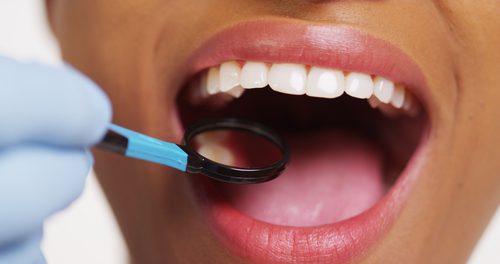
Potentially Harmful Materials
In the past, dental practices often worked with materials that were later found to be unsafe. Older materials, such as mercury amalgam fillings, that are potentially toxic can be removed and replaced with a safer material. Dr. Tomazin is SMART (safe mercury amalgam removal technique) certified by the International Academy of Oral Medicine and Toxicology (IAOMT). These removal techniques focus on preventing additional exposure to these substances during extraction. Swishing fluoride in your mouth is a treatment that can be replaced with acidity-reducing techniques to help reduce tooth decay while avoiding fluoride exposure.
Newer Treatments
Using advanced technology, Dr. Chad Tomazin can treat gum disease, cavities, and other dental concerns using proven, effective techniques that do not require harmful materials.
Oxygen-ozone
Activated oxygen-ozone is an effective approach to oxidizing and destroying bacteria in the mouth while also reducing bacteria colonization. By combining three oxygen molecules, instead of the two oxygen molecules that comprise the air we breathe, it creates a highly antibacterial, antiviral, antifungal component that eliminates bacteria and disinfects the treated areas.
VELscope®
Detecting any traces of cancerous tissue is important for treating oral cancers. VELscope® provides access to clearly view tissues in the mouth, allowing detection of cancer or tissue abnormalities immediately to prevent issues in the future.
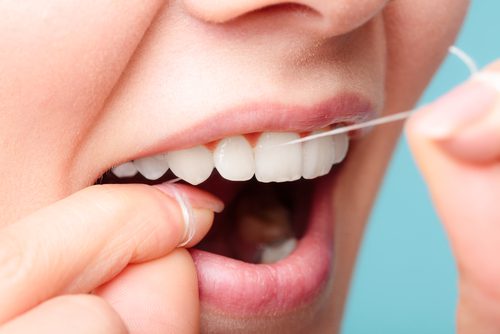
Tips for Increased Oral Health and pH
It is recommended that patients schedule a dental appointment every six months, and more frequently if you have a dental concern or tooth discomfort. Children should also begin this routine at two or three years old, and parents should schedule their initial appointment as early as when their first tooth appears. Switching to an electric toothbrush removes more plaque and bacteria than traditional manual toothbrushes, which can help slow down the tooth decay process. Brushing after every meal, drinking water while you eat, chewing sugarless gum, and reducing acidic beverage consumption can all help to lower your mouth acidity level. Additional tips to help you achieve a healthier mouth can be found on our tips for a healthy mouth page.
To learn more about your oral pH levels and to schedule an appointment, call our office at (951) 686-3666 today.
Feeling confident about your smile is essential for everyday life. From expressing happiness to exuding a positive attitude during a job interview, your smile is often the first feature others notice. A high percentage of people are embarrassed by their smile due to having tooth gaps, chips, shape imperfections, discoloration, decay, and unsightly metal restorations. Metal is not as aesthetically pleasing as porcelain and can lead to gum recession over time. Dr. Tomazin offers porcelain crowns to patients desiring a beautiful, corrected smile. These restorations are strong, match the natural shade of your teeth, and last much longer than typical mercury crowns.
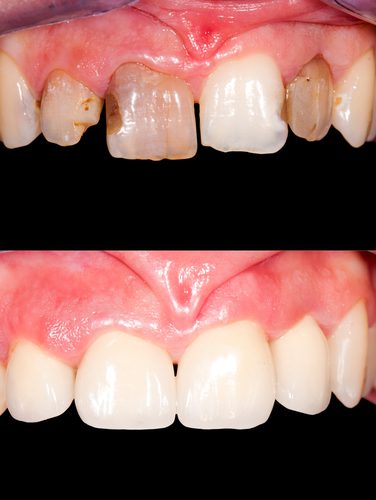
Traditional Crown Application
Traditional crown procedures involve numbing the area around the tooth. Once the anesthetic takes effect, areas of decay, cracks and deteriorating tooth structure are removed. The tooth is then modified and prepared for a crown restoration. Next, an impression of your tooth is made using a material that requires approximately five minutes to set while in your mouth. The tooth is then covered with a temporary crown that serves to protect the tooth until the final crown is created by the dental lab. While temporary crowns are provided as protection for the tooth, these temporary crowns may fall off or break during inopportune moments, leading to sensitivity or discomfort, and another dentist visit is necessary to reattach the temporary. Once the final restoration is completed, you return to the dentist’s office and receive another injection for the cementation of your permanent crown.
CEREC® Crown Application
Your smile can be rejuvenated by correcting dental imperfections with a CEREC® crown or, in some cases, multiple crowns. This procedure is ideal for patients seeking to restore a healthy, dazzling smile in one visit. In addition to having many color options available to match your natural shade, Dr. Tomazin also offers same-day crowns with CEREC®, the latest in dental technology, which allows dentists to create and place custom-designed crowns in a more timely and efficient way. Dental crowns are designed in-office and then gently fitted around the entire tooth on the same day. Through this process, the tooth is reinforced and protected from further damage or decay, and there is no need to wear a temporary crown while the final crown is being created.
The CEREC® Process
Typical CEREC® procedures involve receiving a numbing injection, and the tooth is prepared similarly to the traditional method. A digital 3D image is taken of your tooth rather than a messy, uncomfortable molded impression. The digital impression is transferred to a computer, and Dr. Tomazin utilizes a computer-aided design (CAD) program to design your custom tooth restoration. Upon completion of the design, the milling unit creates your porcelain crown in 15 to 20 minutes. The new crown is then bonded to the prepared tooth, and the process is complete. This method also removes the discomfort of temporaries, potential re-cementing, or additional numbing injections.
Classic Porcelain Crowns or Modern CEREC® Crowns?
As technological advancements are made in the dental field, patients are beginning to gravitate towards Chairside Economical Restoration of Esthetic Ceramics (CEREC®) procedures for same-day crowns to resolve dental issues such as gaps in teeth, discoloration, cracks, and other damages quickly and efficiently. CEREC® technology is rapidly gaining popularity, as the results are natural looking and long lasting. While patients seeking a stronger material than ceramic can still choose traditional porcelain crowns and veneers, it is a good idea to educate yourself on your options to decide which process will be better for your ideal smile.

What Is the Difference?
Your smile is unique and can dramatically change your appearance. While traditional crowns are still a viable option for many patients, if you are seeking a solution that will closely match your natural teeth, then same-day crowns may be your best option.
Traditional Crowns
Traditional crowns are created by taking a mold of the teeth, which is then sent to a lab for processing. Creation of your crown can take up to three weeks to complete, so a temporary crown is used in the meantime. The new crown can be made from different materials, such as porcelain, ceramic, resin-composite and zirconia.
Same-day Crowns
CEREC® crowns utilize advanced dental and computer technology to take a digital impression of teeth, rather than the messy, uncomfortable mold, within a matter of minutes. Digital images are sent to the computer-aided design/computer-aided manufacturing (CAD/CAM), and the milling unit creates your new crown using ceramic and ceramic-reinforced materials. The entire process takes approximately two hours total, and a follow-up visit is usually not required. If you are seeking a convenient procedure that will not require more than one appointment in most cases, this may be the best option for your dental needs.
CEREC® Benefits
Patients seeking an expedient dental experience and natural and immediate results without an awkward temporary crown often select same-day crowns, as they are completed rapidly and accurately. An added benefit of the CEREC® technique includes being able to avoid additional numbing injections, as these are only required during your initial visit, except in cases where adjustments to your bite are required.
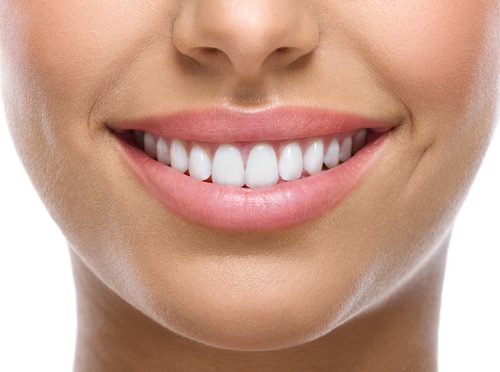
Love Your Smile
Having a bright smile that you can be proud to show off is an excellent confidence booster, and can positively affect your daily life. Regardless of the process you select, our team is dedicated to providing the most current options available to help you achieve your dental goals.
To learn more regarding porcelain crowns and how technology has advanced through the CEREC® method, please contact our office by calling (951) 686-3666 to schedule a consultation today!
One of the most significant concerns people have about their teeth is how their smile looks. Over time, teeth can become discolored or damaged. Many patients also experience tooth loss as a result of decay or dental trauma. Fortunately, you can enhance the appearance and functionality of your teeth with a customized smile makeover. Dr. Chad Tomazin performs various smile makeover treatments and procedures that can revitalize your smile and boost your self-confidence.
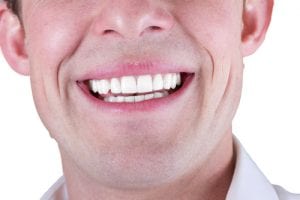
What Are My Smile Makeover Options?
Every patient has different needs, so developing a personalized treatment plan that addresses your specific condition can ensure you achieve optimal results. Depending on your cosmetic and functional desires, you can choose from the following smile makeover procedures:
- Porcelain Veneers: These long-lasting restorations are permanently attached to the teeth to improve their appearance. Porcelain veneers are appropriate for patients who have misaligned, broken, or stained teeth.
- Teeth Whitening: Patients who struggle with discolored or stained teeth can benefit from teeth whitening services. Dr. Tomazin offers several options to brighten your teeth, including both at-home whitening and in-office whitening procedures.
- Dental Bonding: This approach is ideal for those who have minor cosmetic imperfections, such as chipped, cracked, or gapped teeth. Dental bonding corrects these concerns and restores the teeth to a more attractive condition.
- Dental Implants: These restorations offer a permanent solution to missing teeth. Dental implants help preserve the integrity of the bone and are designed to match the surrounding teeth.
Maintaining Your Results
Going to the dentist regularly for checkups and cleanings can help maintain your results. During a general dentistry appointment, your dentist will examine your teeth and any restorations for signs of gum disease, tooth decay, and oral cancers. Most patients are advised to schedule a visit with their dentist at least once every six months. However, those who suffer from periodontal disease may need more frequent visits, which may involve one of our hygiene and ozone periodontal therapy programs.
If you would like more information about how to revitalize your smile or to schedule an appointment with Dr. Chad Tomazin, please call 951.686.3666.













